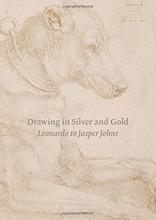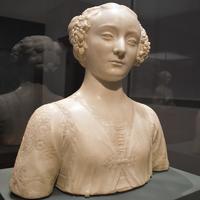More about Andrea del Verrocchio
- All
- Info
- Shop
Works by Andrea del Verrocchio

Contributor
Andrea del Verrocchio is the teacher behind some of the great masters of Florentine art.
For Verrocchio, it’s a case of the student surpassing the master. And boy, what a student indeed. His pupil was none other than Leonardo da Vinci. For ten years, da Vinci learnt plenty about art from Verrocchio, and even lived with his teacher until the age of twenty-six. Da Vinci even contributed to his mentor’s paintings, giving him a fish in Tobias and the Angel. It wouldn’t be the only time da Vinci was credited for painting something by Verrocchio, and he wasn’t the only one contributing to his teacher. Verrocchio’s students painted plenty of images alongside their master teacher, making it so two or more artists are often attributed to any one canvas.
Don’t let this man get outshined by da Vinci, though. This Renaissance man hailed from Florence and was a master by thirty years old. The Medici family loved him so much they flooded him with commissions. While Verrocchio’s art was loved during his life, the gremlin gatekeeper of art history, Giorgio Vasari, didn’t like him very much, so the book closed on Verrocchio. I wouldn’t believe everything Vasari says; he isn’t that great of a guy and probably falsified historical events (like the time he said Raphael died during serious lovemaking). Vasari underestimated Verrocchio. After all, Verrocchio trained the likes of da Vinci, Botticelli, Perugino, and Ghirlandaio. Verrocchio was a man admired. The Florentine poet Ugolino Verino declared, “Whatever painters have that is good they drank from Verrocchio’s spring.”
Despite not having a ninja turtle named after him, let’s not forget Verrocchio had a hand in training them and turning them into legends, and he was pretty great in his own right, too.
Sources
- Butterfield, Andrew, The Sculptures of Andrea Del Verrocchio. New Haven: Yale University Press, 1997.
- Dafoe, Taylor, “A marvelous new exhibition argues that Verrocchio, Leonardo da Vinci’s mentor, deserves far more credit than he gets,” Artnet News, September 30, 2019. Date Accessed July 1, 2020. https://news.artnet.com/exhibitions/rare-exhibition-explore
- Carl Daher Delnero, “Verrocchio: forgotten genius of the Renaissance,” Rutland Herald, December 7, 2019. Date Accessed July 1, 2020. https://www.rutlandherald.com/features/vermont_arts/verrocchio-forgotte…
- Farago, Jason, “In ‘Verroccio,’ Leonardo’s master is the star,” The New York Times, October 10, 2019. Date accessed July 2, 2020. https://www.nytimes.com/2019/10/10/arts/design/verrocchio-review-nation…
- Gay, Peter, Modernism: the Lure of Heresy: from Baudelaire to Beckett and Beyond. New York: W.W. Norton and Company, 2008.
- Kleinbub, Christian, “Andrea del Verrocchio: Sculptor and Painter of Renaissance Florence,” The Brooklyn Rail, November 2019. Date Accessed July 1, 2020. https://brooklynrail.org/2019/11/artseen/Andrea-del-Verrocchio-Sculptor…
- Stemp, Richard, “Andrea de Verrocchio steps out of the shadows of his star pupil,” Apollo Magazine, May 3, 2019. Date Accessed July 1, 2020. https://www.apollo-magazine.com/andrea-del-verrocchio-leonardo/
Featured Content
Here is what Wikipedia says about Andrea del Verrocchio
Andrea del Verrocchio (/vəˈroʊkioʊ/ və-ROH-kee-oh,
US also /-ˈrɔːk-/ -RAW-,
Italian: [anˈdrɛːa del verˈrɔkkjo]; born Andrea di Michele di Francesco de' Cioni; c. 1435 – 1488) was an Italian sculptor, painter and goldsmith who was a master of an important workshop in Florence.
He apparently became known as Verrocchio after the surname of his master, a goldsmith. Few paintings are attributed to him with certainty, but important painters were trained at his workshop. His pupils included Leonardo da Vinci, Pietro Perugino and Lorenzo di Credi. His greatest importance was as a sculptor and his last work, the Equestrian statue of Bartolomeo Colleoni in Venice, is generally accepted as his masterpiece.
Check out the full Wikipedia article about Andrea del Verrocchio

















